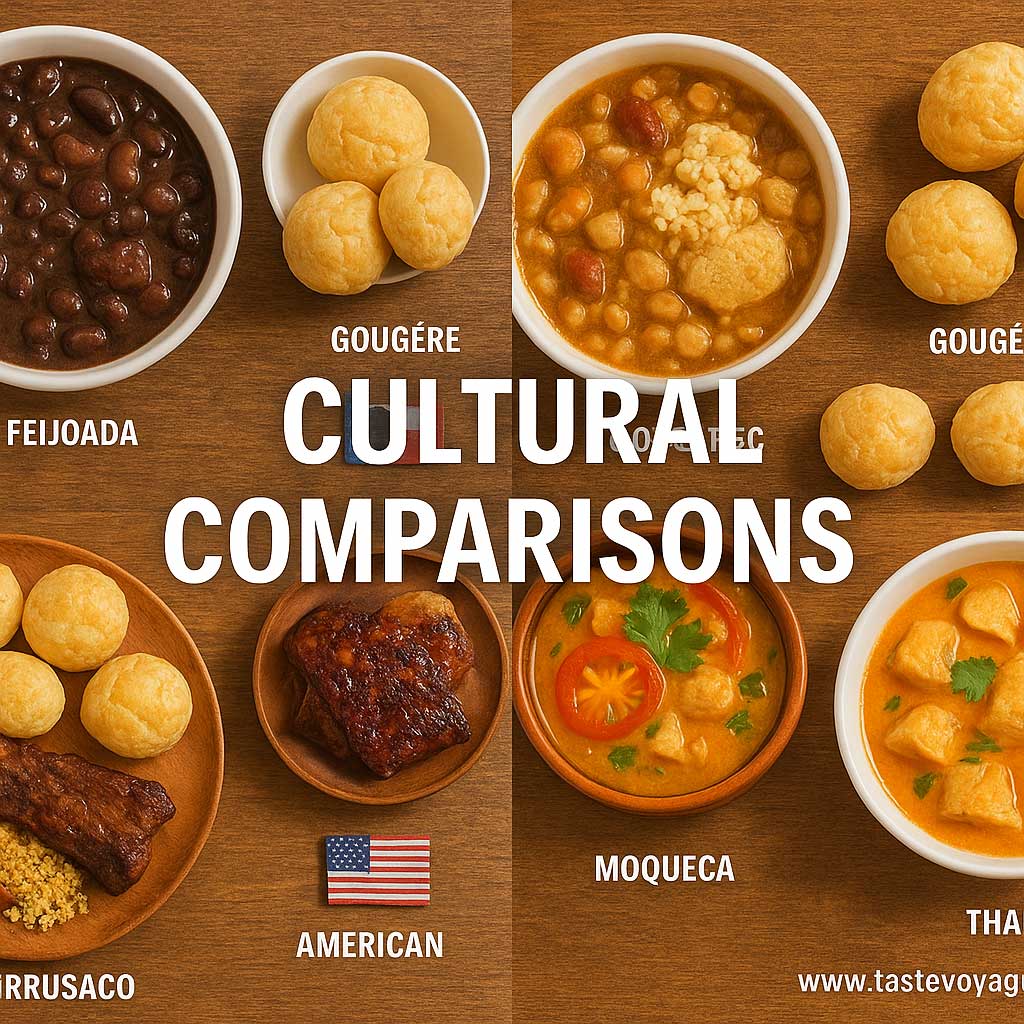Brazilian vs French Desserts: Which Tastes Better?
Travel the World Through Food >> Brazilian Cuisine>>Cultural Comparisons>> Brazilian vs French Desserts: Which Tastes Better?
Brazilian vs French Desserts: Which Tastes Better?
Brazilian vs French Dessert Comparison: A Celebration of Culinary Heritage
Desserts are more than just sweet endings; they are a reflection of a country’s culture, history, and culinary artistry. When exploring the world of confections, few comparisons are as intriguing as that between Brazilian and French desserts. Each offers a unique taste experience and a window into their rich culinary traditions. This article delves into the cultural significance and culinary artistry behind these two beloved dessert styles, celebrating their unique roles in their respective food cultures.
The Cultural Roots of Brazilian Desserts
Brazilian desserts are a vibrant expression of the country’s diverse heritage. They often showcase local ingredients, tropical fruits, and regional flavors, illustrating Brazil’s rich ecological landscape. Popular treats like quindim, brigadeiro, and cocada embody a sense of community and celebration, frequently enjoyed during festivals, family gatherings, and Special Occasions.
Brazilian desserts emphasize warmth, conviviality, and the inventive use of available ingredients. For example, brigadeiro is a simple yet iconic chocolate truffle made from condensed milk, cocoa powder, and butter—creating a sweet that’s both comforting and festive. Similarly, quindim combines coconut, sugar, and egg yolk into a dense, sticky delight that highlights tropical flavors.
Culturally, these desserts serve as symbols of joy and togetherness. They often tell stories of regional traditions and local ingredients, fostering a sense of identity and pride. They are accessible and often prepared with love, emphasizing community bonding and shared heritage.
The Elegance and Refinement of French Desserts
French desserts are renowned worldwide for their sophistication, finesse, and culinary precision. They embody centuries of pastry craftsmanship, highlighting techniques that elevate simple ingredients into artful creations. Classic French desserts such as crème brûlée, macarons, and tarte Tatin showcase balance, texture, and elegance.
French confectionery often emphasizes meticulous presentation and delicate flavors. For instance, macarons are not only celebrated for their colorful, crisp shells and luscious fillings but also for their complexity, requiring mastery of baking techniques. Crème brûlée offers a harmonious contrast between creamy custard and caramelized sugar topping, emphasizing nuanced flavors and textures.
These desserts symbolize the French’s dedication to culinary artistry and their appreciation for refined taste. They are often associated with fine dining and sophisticated gatherings, reflecting a culture that values craftsmanship, aesthetics, and sensory pleasure.
Culinary Significance and Shared Elements
Despite their differences, Brazilian and French desserts share common culinary themes. Both cultures prioritize the quality of ingredients, mastery of technique, and the importance of desserts as a centerpiece of social occasions. They serve as expressions of cultural identity—be it the bold, tropical flavors of Brazil or the elegant, precise craftsmanship of France.
Both culinary traditions also encourage innovation within their frameworks. Brazilian chefs increasingly incorporate modern techniques and regional ingredients, creating contemporary takes on classic sweets. French pastry chefs continually refine their craft, pushing boundaries while respecting tradition.
A Feast for the Senses
Ultimately, Brazilian and French desserts celebrate the artistry of baking and confectionery, offering a feast for the senses. They remind us that sweets are more than just taste—they are stories, traditions, and expressions of cultural pride. Exploring these desserts invites admiration for the diversity and richness of global culinary heritage.
Whether you favor the warm, community-oriented flavors of Brazil or the refined elegance of France, both traditions provide a delightful journey into their respective cultures. Through their unique characteristics, they underscore the universal language of sweetness that brings people together and celebrates the beauty of culinary craftsmanship.
Embrace the Journey
In appreciating the comparison between Brazilian and French desserts, one discovers a shared passion for creating delights that transcend taste alone. They celebrate life’s special moments, bringing joy and connection to those who indulge. So, whether you’re drawn to the tropical vibrancy of Brazil or the sophisticated finesse of France, these desserts offer a delicious way to explore the depths of each culinary tradition.
Indulge in these confections, and let them inspire your appreciation for the rich tapestry of global food culture. After all, desserts are more than just treats—they are a reflection of the heart and soul of a nation.
